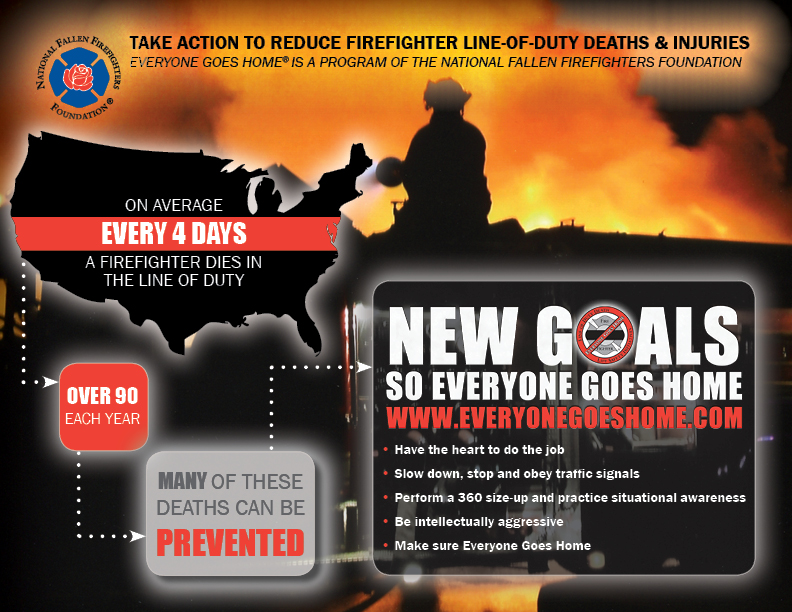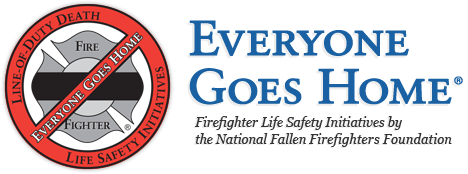From the December issue of Firehouse® Magazine
By Chief Ronald J. Siarnicki
It seems that more often television shows and movies that feature firefighters tend to portray them as the picture of health. The characters are strong, well-proportioned and athletic, implying that these men and women also eat balanced diets, don’t smoke or drink excessively and probably are not at risk for heart disease, stroke or cancer. In all likelihood, the audience presumes that the majority of U.S. firefighters are the same as the characters they are watching and are shining examples of health and fitness.
Yet we know this is not exactly a depiction of the truth. Firefighters are not that different from the rest of the general American public when it comes to our health. We struggle with our weight, our blood pressure and our cholesterol. Not all of us can run a mile in under 8 minutes—if at all. Our diets may not be rich in antioxidants, Omega-3 fatty acids and whole grains. Add to those factors, the excessive physical stress, heat and toxins firefighters endure, which increases the risk of sudden cardiac events, cancer and other diseases.
The fact is more than half of line-of-duty deaths are a result of a cardiac incidents every year. In 2014, 57 of the 84 line-of-duty deaths were caused by heart attacks. And the number of firefighters dying each year from cancer is on the rise.
Making strides
Certainly, we can all agree that since the first Tampa Summit in 2004, the fire service has made great strides in reducing line-of-duty deaths and injuries by improving education, training and response tactics. The messages have been embraced by departments from coast to coast. Firefighters recognize and often calculate the value of risking personal safety before entering a precarious situation when no other lives are in jeopardy. As a result, there have been fewer trauma-related deaths and injuries throughout the past few years compared to previous decades.
To begin, during TAMPA2, we addressed that all firefighters need to be more aware of the inherent health risks associated with firefighting. The group discussed the value for education and training about preventative measures that can and should be taken. This includes ensuring that PPE fits properly, is cleaned regularly and stored appropriately. This information is something we should be sharing from the time firefighter candidates enter the training academy and continue during recertification classes, drills and around the kitchen table.
But the risks aren’t limited to exposures. We must be aware of the natural health risks we face through our family histories. Predisposition to heart disease, strokes, diabetes or different forms of cancer can affect outcomes later, especially considering our working environments. We must promote the importance of healthy diets, regular and vigorous exercise, as well as eliminating tobacco use to further reduce risks of cancers and cardiovascular events. As we discussed at TAMPA2, there’s considerable room for improvement when it comes to health and fitness.
We need to do more
NFPA 1582 is considered the gold standard for firefighter physicals. However, the lead discussion group on physical health at TAMPA2 noted that meeting the standard presents a challenge for many fire departments due to cost, complexity of the standard and organizational culture. The attendees agreed that developing a document based on NFPA 1582 would be a positive step. They envisioned one that provides cost-effective guidance on implementing the standard, resources to meet specific physical and health goals, and positions a culture of health and safety in a positive light.
The group also recommended the fire service encourage more research in two specific areas: the benefits to firefighters and their communities for mandatory annual physicals and how the aging process affects firefighting. The attendees of TAMPA 2 saw merit in establishing fitness for duty programs verses selecting a chronological age point. They recommended assessing military fitness programs and other industry best practices. There was also recognition for other corporations and organizations that value employee wellness by hiring full- and part-time Health/Fitness/Wellness coordinators.
So where do we go from here? From the discussions during and since TAMPA 2, I believe the following needs to occur:
• Every firefighter must have an annual medical evaluation.
• Fire departments need to incorporate “Wellness” (health and fitness initiatives) in their strategic and training plans.
• Improving “Wellness” should be a high priority item for grant funding.
• The fire service must identify and pursue the multitude of resources available to support research funding and start these programs.
• Health and Fitness Coordinators, or a very robust wellness program, should be the norm in such a highly physical and demanding industry.
• If you’re going to be a good firefighter, and if you care about your family and loved ones, you need to take better care of yourself. Making health and fitness a priority is a win-win for everyone.



